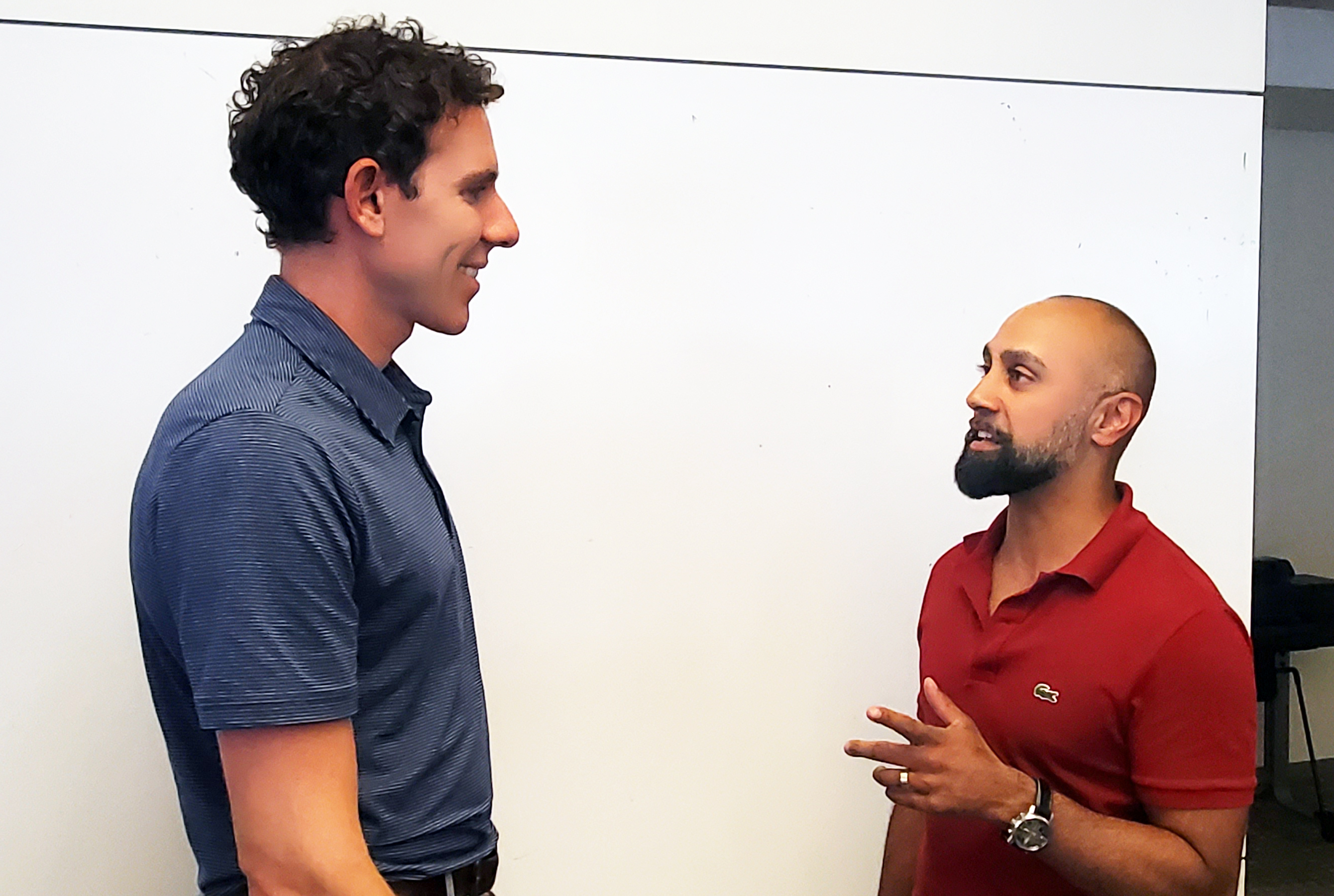The Employee Journey: Rick Hundal, P.E., Sr. Energy Storage Project Manager
Rick Hundal, P.E. joined IHI Terrasun Solutions when the energy storage industry was getting its start and most projects hovered around a few megawatt hours. As the industry has grown, Rick's experience and expertise has expanded to management of the integration, commissioning and deployment of projects that are hundreds of megawatt hours. The journey, in his own words:
How did you find IHI Terrasun?
In 2019, Larry Kane (now Vice President of Engineering and Projects at IHI Terrasun) called me to see if I’d want to join him at this place called IHI. I’d never heard of it, but I’d worked with Larry for years on nuclear power plants (we were at different consultancy firms working on nuclear power plants in Canada). I was based in Ontario, Canada where IHI Terrasun(then called IHI Energy Storage) was awarded 9 projects and they needed someone local to manage the construction and commissioning. We didn’t have an Ontario office, so instead of looking for an office space just for me, we decided I would work from home. You could say that I was working from home before it was cool.
Those 9 projects were interesting because IHI was also the EPC (Engineering, Procurement and Construction) company– work we typically don’t do. Of course, we subcontracted the ditch digging work and the building, but a lot of it fell to my hands. I loved being on site. When they poured concrete – I was there. When they positioned the containers, I was there. When the batteries arrived, I was there to see the installation.
Then Covid-19 pandemic hit and everything turned upside down. We still had a lot of work to do on the sites, and it was a steep-learning curve for me because I’m not an electrical engineer by training. I’m a mechanical engineer–I still have my Professional Engineer stamp and I must have stamped thousands of documents and calculations when I was working on nuclear power plants. This was different – I didn’t know much about integrating, commissioning, or testing batteries when I started, but I learned from the people around me. I also learned system controls software and networking. The US/Canada border was shutdown and we couldn’t get our field team to Canada, so I had to install our power plant controls software on the sites. Finally, I figured out that I could bring in commissioning teams from the US to do all the cold and hot commissioning work on the batteries because energy was considered an essential service. That was fortuitous.
What do you like about working for a young company like IHI Terrasun, vs the established energy providers as you had in nuclear energy?
It was great to join IHI Terrasun at a time when we have a chance to setup a lot of our processes. Larry [Kane] has been setting up a lot of our processes from his experience in nuclear, but we’re also at a time when we can refine them and take what we need to operate safely and efficiently. We can remove obstacles and red tape that have no value in either safety or performance. It’s fun to be part of and watch the creation of an industry.
What would you say to someone considering energy storage as a career path?
This is an exciting market that’s not going anywhere – you’re going to have a steady job for a long time. Things will only grow because we need storage to balance out the gaps between solar and wind generation with energy storage.

In addition, storage can serve other functions beyond electricity dispatch: it can do grid firming functions such as frequency or voltage stabilization. There is so much potential in these systems and we’ve only scratched the surface. This is why working at IHI Terrasun is so exciting. We write our own power plant software, so we can innovate as needs change and we expand functionality of systems later even after commissioning.
Energy storage moves at a different pace than the old school thermal energy systems. Sometimes we’re in a meeting between our end customer and the utility, and we know more about project testing than either of the other parties. That would never happen in nuclear: those tests, parameters, and sequences are all defined and have been for decades. In energy storage, we can innovate, which is interesting.
Who are you as a professional?
I’m a problem solver – that’s what I do all day. Our distributed generation projects are all somewhat different and I’ve worked with every single battery and inverter combination we’ve installed. Now that our projects are getting bigger, that hands on learning is paying off. It makes us better in the face of challenges. IHI, and very specifically our project management team, has a work ethic of deep project support, even if at times it goes beyond our scope. For example, when talking about BESS testing, sometimes our customers and the utilities don’t know what’s needed for power or timing or sequencing. I’ve done it so often that I can tell you in 5 minutes how to do it. It’s not strictly our scope but we can’t do our work correctly if the testing isn’t scoped correctly. That’s how I would answer that question: I’m a professional problem solver.



